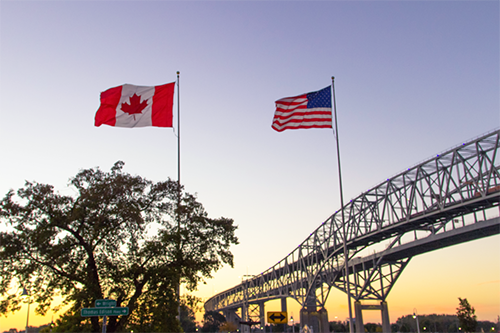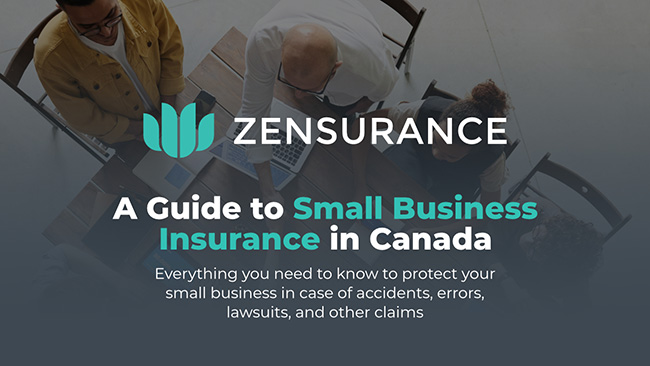Each year presents new challenges and opportunities for small businesses, but 2025 could pose an economic challenge unlike any Canada has endured if president-elect Donald Trump’s threat of imposing blanket 25% tariffs on goods imported from Canada comes to fruition.
Canada’s economy is deeply intertwined with the American economy, forming one of the most significant bilateral economic partnerships globally. However, this relationship is now under threat. The exact extent of the tariffs’ impact on Canada remains uncertain as Trump prepares for his second term in the Oval Office on January 20.
The U.S. is Canada’s largest trading partner, and Canada is a significant trading partner for America. According to Statistics Canada, total trade with the U.S. in 2023 is estimated to be $595.5 billion in exports and $373.7 billion in imports.
Meanwhile, data from the U.S. Census Bureau for 2024 up to October of last year shows the U.S. exported US$293 billion worth of goods to Canada, while imports from Canada totalled US$344 billion.

Download Our FREE Insurance Guide
Learn everything you need to protect your small business.
Whitepaper download
"*" indicates required fields
Your email address will be used by Zensurance to provide latest news, offers and tips.
You can unsubscribe at any time.

It’s a widely accepted belief that Canada would not emerge victorious in a trade war with the U.S., even if the Canadian government retaliates with its own measures. Economists predict that a 25% tariff on all Canadian imports, combined with retaliatory tariffs by Canada, could plunge the country into a recession this year. This move could also lead to a spike in inflation and an increase in the unemployment rate to as high as 7.9% by the end of the year.
Some economists view the U.S. threat of using tariffs as a bargaining chip to pressure Canada into making concessions during the renegotiation of the Canada-United States-Mexico Agreement (CUSMA) in 2026.
That begs the question: What can Canadian small business owners who rely on smooth trade relations with the U.S. do to try to prepare for a blanket tariff if one is imposed on our country?
How Would the U.S. Tariffs Affect Canadian Small Businesses?
If you’ve ever watched the 1986 comedy film, “Ferris Bueller’s Day Off”, you might recall a scene in the movie with a teacher explaining what the Smoot-Hawley Tariff Act of 1930 was. This piece of American protectionist legislation was enacted to protect U.S. industries from foreign competition. It actually made things worse for the U.S. and contributed to triggering the Great Depression stateside.
Whether it’s a watered-down 10% tariff or a whopping 25% tariff the Trump administration imposes on Canada, the impacts it could have on our country’s economy would be severe.
The Canadian Chamber of Commerce reported a 25% tariff would shrink Canada’s GDP (gross domestic product) by 2.6% (or about $78 billion).
A 2024 report by PwC Canada, a research consultancy, warned the potential economic implications of Trump’s protectionist policy would lead to higher inflation, interest rates, labour costs, and cost of living.
The report also suggested tariffs would lead to further declines in the Canadian dollar versus the U.S. greenback. That could reduce the cost of Canadian exports to the U.S., but it may also raise the possibility of additional trade barriers imposed by the Trump administration.
5 Things Canadian Small Businesses Can Do to Prepare for Raised Tariffs
Taking pre-emptive action to cushion your small business from the impact of U.S. tariffs is worth considering. Here are five things to investigate doing:
1. Assess Cost Implications
Stay informed about what goods are subject to the Trump tariffs and their rates. Understand how a tariff will increase your costs along the supply chain and how it will affect your business’s pricing, profit margins, and customer demand. Contacting trade experts, industry associations, and legal advisors will be essential to ensuring compliance and knowing what rules to follow.
2. Enhance Your Supply Chain
If the majority of your business’s supply chain originates from the U.S., look for options in other countries. Furthermore, seek out domestic suppliers to minimize exposure to tariffs and currency exchange rate fluctuations. Now is also the time to stockpile as much inventory and raw materials as your business needs, but be aware of the need to ensure your insurance coverage limits can account for higher inventory levels in storage.
3. Differentiate and Innovate
Embrace the opportunity to innovate and differentiate your business. Invest in developing products that offer greater value to customers and emphasize quality. Upgrading your business’s technology and digitizing internal processes can help reduce operational costs while adapting to the changing economic landscape.
4. Diversify Export Markets
Take control of your business’s future by looking beyond the United States. Reduce your dependence on American markets by exploring opportunities in Europe, Mexico, Asia, and South America. Contact the Canadian Trade Commissioner Service for help identifying and entering new international markets.
5. Work With U.S. Buyers
Communicate frequently with your American customers and suppliers to find ways to collaborate and share the cost of tariffs. Highlighting your business’s value, quality, and services to the American market can help justify renegotiating pricing adjustments.
Can Business Insurance Shield Small Businesses From Tariffs?
Business insurance may indirectly shield a small business from high tariffs by helping manage financial and operational risks.
For example, if stockpiling inventory now to avoid tariffs later, check your commercial property insurance’s coverage limit to ensure it reflects the value of stored goods to safeguard against theft or damage to inventory from fire and water.
Another option may be to add contingent business interruption insurance that reimburses lost profits or earnings and extra expenses resulting from an interruption of business at the premises of a customer or supplier, which a business depends on but does not control.
Errors and omissions (E&O) insurance may help protect your business from legal costs if it becomes embroiled in a dispute or claim by a customer because of tariff-related price hikes. For consultants or businesses advising on logistics, professional liability insurance (another name for E&O insurance) is necessary to cover you from allegations or claims of professional negligence or mistakes associated with tariff management.
Tariffs or Not: Protect Your Small Business With Customized Insurance
The coming weeks and months may be a roller coaster for the Canadian economy and small business owners. However, this predicament emphasizes the importance of ensuring a customized business insurance policy covers your risks and helps reduce potential turmoil.
Fill out our online application now for a free quote in less than five minutes.
Let our knowledgeable team of licensed brokers shop our partner network of over 50 insurers to get the affordable coverage you need and tailor it to suit your small business’s challenges now and in the future.
– Reviewed by Brandon Bowie, Team Lead, Professional Lines, Zensurance.
Recent Posts
How Much Does Manufacturing Insurance Cost in Canada?
The Canadian manufacturing sector plays a crucial role in driving economic growth. However, liability risks lurk at every stage for manufacturers of every kind. Get an overview of manufacturing insurance and the factors that determine its cost.
8 Costly Insurance Mistakes Airbnb & VRBO Hosts Make (And How to Avoid Them)
Third-party home-sharing platforms like Airbnb and VRBO make attracting vacationers and short-term renters easy, but safety and financial security should always prevail over any enterprise. Here’s how to protect your rental property.
What Insurance Do Temu Sellers Need?
E-commerce marketplace Temu has grown in popularity with consumers and online sellers since its launch in Canada in 2023. However, selling goods on third-party digital marketplaces poses potential liability risks to sellers and small businesses. Here’s what sellers should know.
Sign Up for ZenMail
"*" indicates required fields









